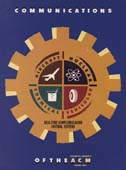A storage and access manager for ill-structured data
Database management systems are powerful tools for processing large volumes of structured, or normalized, data. Much of the data to be stored in computer systems, however, differs from normalized data in both its logical uses and the storage structure required for its effective management. For instance, Van Rijsbergen (1979) distinguishes database retrieval from information retrieval (IR)—the retrieval of references to text—by comparing the following logical characteristics of IR systems to database management systems: IR Systems employ partial (vs. exact) matching; they are built on an underlying probabilistic (vs. deterministic) model; they classify information on a polythetic (vs. monothetic) basis, and queries are incompletely (vs. completely) specified. Similarly, other forms of relatively ill-structured data such as semantic networks [15]—which require property inheritance, and production rules—which must be joined in logical chains also differ in their logical use from normalized record structures.




